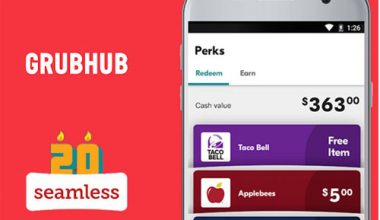
About Flutter App Development
We are a startup and shall we choose Flutter? Are there any cons in Flutter App Development technology? Let’s address all the Flutter-related questions and know their pros and cons. Okay, these days, companies need to make critical decisions when it needs to choose their mobile technology. They are continuously doing tests and analyze innovations to create powerful digital experiences regardless of the mobile device or operating system of the user. Flutter App Development Companies that fail to produce easy-to-use products and services, regardless of platform or network, are at risk of falling behind the competition.
So, Flutter belongs to the Google’s mobile app SDK, complete with a framework, tools and widgets to has become a big asset to developers for creating and deploying visually attractive, high performance oriented on both Android and iOS platforms. The difficulty is that cross-platform design can be troublesome. In several instances, the user experience lags behind that of actual native devices, despite the best efforts of a developer. We have seen the advent in recent years of various mobile frameworks such as React Native, Xamarin, and AngularJS that help make these virtual experiences easier to produce. We recently saw a new player joining the game that is no other than Google’s Flutter.
Flutter comes motivated by a number of features that have never been seen before in a cross-platform environment, based on Dart, the in-house Google Programming Language. The development platform combines the best of Skia’s graphics library with Material Design–resulting in the creation of mobile apps that allow lightning speed transitions and it domes completely with a loaded with design elements that are known to support and fit right into the Android and iOS. While we have already taken a deep dive into the features that make Flutter perfect for cross-platform growth, let’s focus on why Flutter is considered ideal for startups that operate on a budget and have plenty of time to go to market.
However, let us check out the reason why it is superset – Cross-Platform App Development is a preferred option and boon for startups and let us discuss why you choose flutter for your startup.
Reason why Startups Choose Cross-Platform App Development
Native app development is costlier and you can get the software for anyone platform-Android or iOS. Android and iOS alike since, the cross-platform apps can run on both platforms. There is no wrong if we say that you can get cross-platform mobile app that is easy to operate at the price of a native app.
Now that we’ve seen Flutter demonstrating its supremacy as a versatile cross-platform device and seeing how it’s proved its superiority in the Flutter vs React Native vs Ionic controversy, it’s time to look at the reasons why Flutter has come as a boon for startups.
While on the one side, Native apps are built specifically for single platform– but when it comes to cross platform app they run and support on both Android and iOS. There are a number of benefits associated with the prospect of creating a similar app that would live on both iOS and Android simultaneously.
- Require Less Effort
The developers do not need to make two versions of the apps and operate on a single codebase, but it takes a lot longer for them to create the cross-platform app.
- Consume Less Time While Testing of App
As with creation, checking the cross-platform device takes less time than your native part. In the case of native apps for Android and iOS, the QA team must check only one version of the app instead of two.
- Development Cost of App is Less
This timesaving is clear, as development and design takes less than the cross-platform app development cost. The cost to create app is usually charged on an hourly basis, particularly when you employ mobile app developers for the app venture. Now, you will need to spend less money if your company software gets ready in less time.
- Faster Time To Market
The mobile application has low development and the test time compared to its native application counterpart is comparatively small. Developers can release the product much earlier on the market, making it easy for them to enjoy the benefits of being an early bird.
Top 15 Reasons on Why Should Startups Choose Flutter
Here are the key startup benefits that Flutter Mobile App Development can bring to your start up to address the many known limitations on the cross-platform path. It has been a long-standing desire of Mobile App Developers to create a truly custom cross-platform product that is usually limited to the development of native apps.
Even with the presence of popular tools and frameworks on the market such as React Native and Ionic, the reality is that the difference between Native and Cross-Platform Apps is so strong that it is a complete disappointment.
The flutter app has a concept that the whole world is waiting for a real one-time coding solution, delivering a strong native interface, using both Android and iOS native UI components.
- Flutter Has Support For A Variety of IDEs.
You can choose from a variety of Integrated Development Environments while coding with Flutter. I started with Android Studio at first, but then I saw Flutter Live where VS Code was used. Which made me wonder, and I found which Visual Code is used by many Flutter developers. I could see why so many people prefer it when I tried it. VS Code is lightweight and much faster, with most of the apps in Android Studio and IntelliJ. I have personally switched to VS Code, but you can also use a variety of other IDEs, so you do not have to turn to start working in Flutter.
- Widgets Nesting
There is a requirement of Flutter based widgets, which are very much required for the apps view and interface. We must look natural and sound regardless of the size of the screen. They also need to be quick, scalable and customizable. It has a rich collection of widgets to build complex custom widgets and comprehensive capabilities. Widgets are not only used for views in Flutter. These are also used for displays as a whole and even for the app itself.
- Frontend & Backend With A Single Code
Compared to Android, where separate fronted (Views) and back-end (Java) files exist, flutter uses a single language (Dart), which both uses the mission and a reactions structure.
Dart is based on many other languages ‘ most popular features without sacrificing Java’s familiarity or related languages. Dart has been made very simple by developer’s with ease in mind.
- Different themes for Android/iOS
Assigning the correct theme to the platform of a user is as simple as using a ternary if you want to test the system the user is running on; allowing the UI to make time choices about which components to use.
- Animations Are Even Easier Using 2Dimensions Flare
This amazing online tool, also launched during Flutter live 2018, can be used to easily create exceptional UI or animations. It bridges the gap between the developer and the UI designer, reducing the time needed to apply changes related to the UI or animation.
- The Developers’ Productivity Increases By Ten-Fold
One of the most influential advantages we have seen becoming the reason why startups should choose Flutter is similar to the efficiency that improves when we use Flutter in our developers. The driving force of this higher productivity growth is derived from Flutter’s state of affairs hot reload feature. In order to allow developers to see the impact of a code change occurring in real time, Flutter eliminates the need to recompile, which reduces the time of creation for mobile apps by many.
- Flutter Can Give A Powerful Experience Of Design
The Material Design partnership with Flutter, which promises powerful users experience, has created a mechanism. It leads to building a smooth, zero learning experience that only native mobile apps usually expect. Flutter comes with unique Android and iOS power packed widgets, so you have the native app’s look.’ Flutter’s widget library is the most widely available catalog ever in any cross-platform instrument.
- Powerful Design Experience Which is Out Of The Box
Thanks to the powerful application of the material layout specifications by the Flutter team, it is easy to create powerful IT experiences right from the box. This helps to deliver the smooth, crisp experience that you usually only see with native applications because a native application is the release build of Flutter.
Flutter has widgets that implement the iOS specifications for the Human Interface Design, enabling you to get that native “feel” on your iPhone and iPad.
- Immediate Updates
The architecture of Flutter has been etched with a hot reload feature so that instant updates can be rendered without plugins. Updates can be viewed in real time with hot reloading. When you encounter an error while running the script, the system allows you to automatically correct it and resume without restarting it.
It can be a challenge to return to normal programming where it takes a lot of minutes to deploy. Hot reload increases your performance, allows you to experiment without long delays, and helps with fast iterations.
- There Is An Extensive Catalog Of Open Source Packages
The large set of open source packages available allows you to create apps quicker, with ease, and there are plenty of existing packages available that simplify most complicated tasks. Although still relatively young, the package library is rising every day due to an ever-increasing population of developers who are actively contributing to Flutter.
- Flutter On Desktop And The Web
The announcement that the Flutter team now has experimental Flutter apps that work in a web browser has shocked everyone. Throughout Flutter Live, the previous Top Secret project, “Hummingbird” was revealed to the world. Eventually, you’re going to be able to use the same software to easily create smartphone, desktop and web apps.
- Perfect for an MVP
If you want to show your brand to investors as soon as possible, you can consider Flutter and create a Flutter mobile application that looks native on Android and iOS. This will give the investors a clear idea of what your MVP looks like. It would take a lot more time and money to develop two separate apps.
- The New Google OS, Fuchsia, will Use Flutter
While Fuchsia’s power is yet to be revealed to the world, we know it is going to rely heavily on Flutter. Chrome and Android are the core of a million online devices, which we anticipate will enter the corporate existence in the future, with the next upcoming operating system. Most market researchers believe that Fuchsia is going to be the foundation of both virtual and augmented reality.
- Straightforward integration with Firebase
Firebase provides incredible including cloud storage, cloud features, real-time servers, networking, authentication, and much more. Instantly, your infrastructure is server less, redundant, and scalable. It means that you do not have to spend a lot of time developing the infrastructure and assets. Combining it with a platform to simplify the creation and release process like Fastlane is also straightforward; enabling ongoing production. So you don’t have to have DevOps resources committed to your squad.
Finally, regardless of what Fuchsia looks like, there is no question about the effect it is going to create. In addition, the use of the cross-platform method is very useful because it is based on Flutter. These current and future advantages or USPs makes a start-up event that every technology entrepreneur is looking for, not only by tailor-made development, but also by time and futuristic.
Some of the Major Cons of Flutter Technology
- Problems With iOS
Because Google has developed Flutter for mobile development, developers are right to worry about its implementation of iOS. Since Google has a keen interest in fixing bugs quickly, it’s fun and easy to build Android apps on the platform. The new software update includes a pixel-perfectiOS look.
IPhone settings have been created in the system to allow Cupertino widgets to be available. These and other design functions were, however, subsequently updated and based on iOS 10 features, though iOS 11 was published some time ago. Whether the updates will continue to be published as quickly as those of the Android version after the software leaves the beta process is therefore not clear.
- Massive File Size
To reduce the size of an app, programmers go through huge lengths. Users have mobile space limitations, and it’s best to launch an app that will keep them from removing it for their favorite images and songs. Generally, programmers avoid animations, compress images, and reduce the number of packages and libraries to decrease the size of the code.
After the Hello world app reached 6.7 MB, the framework has massively disappointed developers. It remained significantly larger than Kotlin, which is 550 KB, and native Java, which is 539 KB even when it was reduced to 4.7 MB.
- Dart Language
Dart is used for the development of Flutter and has both advantages and disadvantages. It is a language of programming and is both object-oriented and fast. Nevertheless, the programming languages are not as broad as C #, Java, Objective-C and JavaScript.
During their learning journey, not many experienced developers can come across Dart, so getting new developers for your team can be difficult. This is a key factor to bear in mind when following a cross-platform strategy.
- No third-Party Libraries
Third-party packages and libraries play a major role in automating user software development and relieving the need to program everything from the beginning. Usually, these libraries are open source, pre-tested, and easily accessible. It is simple to get the appropriate package for most current and older technologies.
Because Flutter is new to mobile development, however, finding these free packages and libraries is not easy. Its official free package resource continues to improve, and its tool list continues to grow. Until you plan to use it for long-term growth, you will therefore have to wait.
Conclusion:
We recommend flutter one who is looking to build a mobile app that has a mild learning curve, high performance, usability and internationalization, ready widgets and instant updates. The benefit of using Flutter is easily apparent and highly attractive, as it alleviates many of the pain points faced by startups attempting to launch it to multiple platforms; especially when dealing with minimal time and budget to sell the software product.
Now that Flutter has been established as the solution to your start-up needs – quicker go-to- market and low cost of develop – what are you waiting for? Contact our Flutter App Developers team and start your powerful mobility journey with us.




